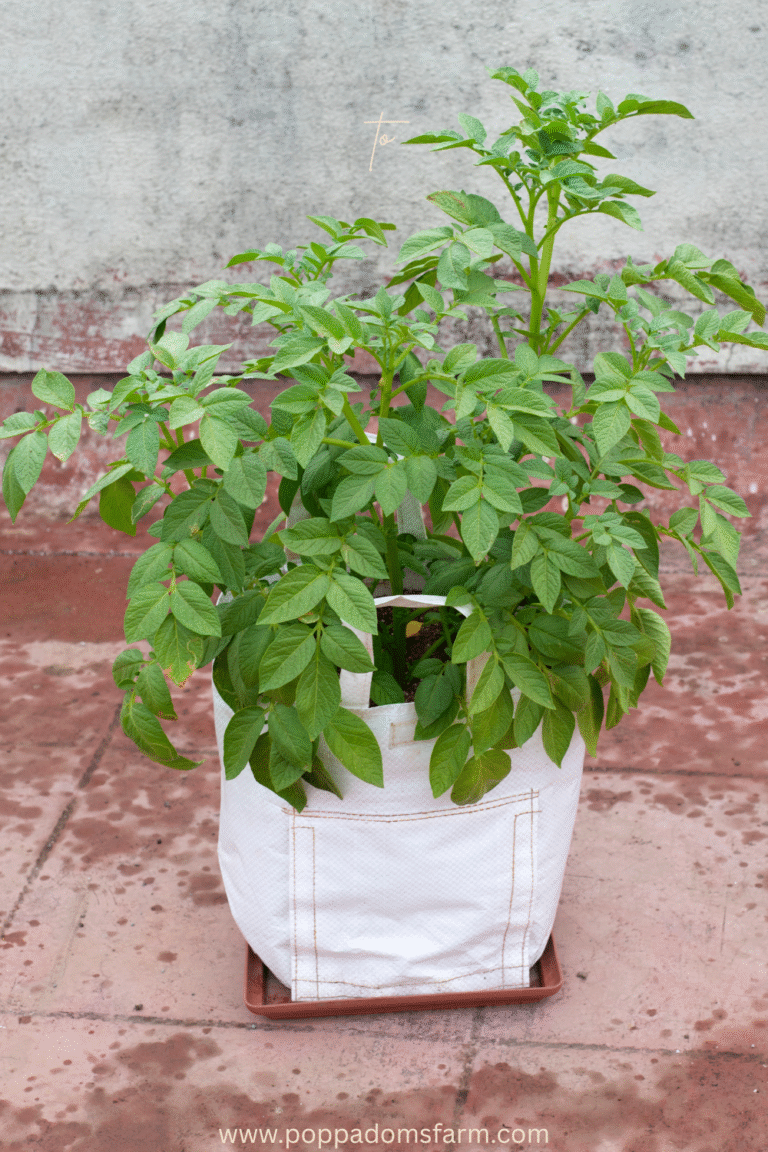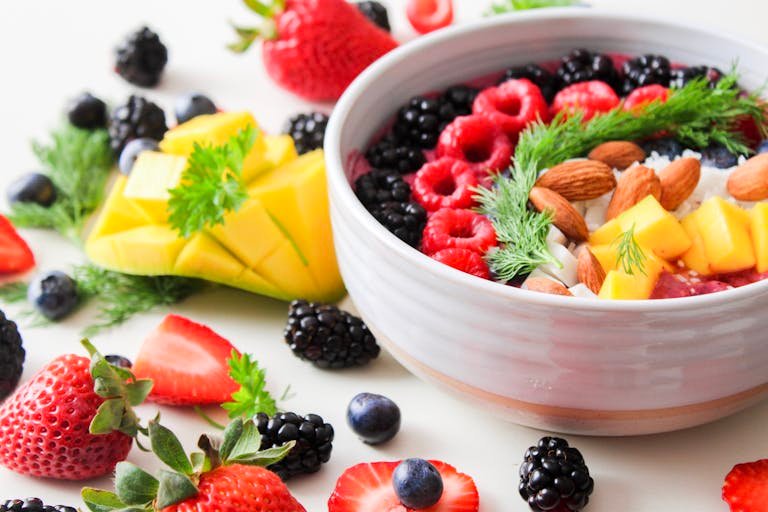
Did you know that a tiny berry native to North America has been quietly revolutionizing our understanding of superfoods? While most of us only think about cranberries during the holiday season, these vibrant red berries have been making waves in the scientific community for their exceptional health benefits. In fact, a groundbreaking 2023 study published in the Journal of Nutritional Science revealed that cranberries contain some of the highest antioxidant levels among all commonly consumed fruits – even outranking the much-celebrated blueberries! Who would have thought! Cranberries: The superfood!
For a fascinating deep dive into the latest cranberry research, check out Nutrition Facts with Dr. Berg
From their humble beginnings as a traditional Native American medicinal plant to their current status as a scientifically-backed superfood, cranberries have quite a story to tell. The Wampanoag people, who first introduced these berries to European settlers, called them “sassamanash” and used them not just for food, but as medicine and natural dye.
Fast forward to today, and modern science is validating what indigenous peoples knew all along – these tart little berries pack a powerful nutritional punch.
What makes cranberries truly special isn’t just their impressive nutrient profile – it’s their unique combination of compounds that work together in ways we’re still discovering. Their signature proanthocyanidins (PACs) have caught the attention of researchers worldwide, showing promise in everything from preventing urinary tract infections to supporting heart health. Whether you’re a health enthusiast, a curious foodie, or simply someone looking to make better dietary choices, understanding the full potential of cranberries might just change the way you think about this overlooked superfood.
Let’s dive into the fascinating world of cranberries and discover why these small but mighty berries deserve a place in your daily diet, not just on your Thanksgiving table!
What Are Cranberries?
You know those little red berries that show up on your Thanksgiving table? They’ve actually got quite an amazing story! Cranberries are native to North America and have been growing wild in bogs and wetlands for thousands of years. Native American tribes like the Wampanoag and Algonquin were the first to discover these tart treasures – they called them “sassamanash” and used them not just for food, but also as medicine and even to create dyes for textiles and pottery! While wild cranberries (Vaccinium macrocarpon) still grow naturally in places like Massachusetts and Wisconsin, most of the cranberries we enjoy today are cultivated varieties that have been carefully bred for size, color, and flavor. What’s really fascinating is how deeply ingrained cranberries have become in North American culture – from the traditional cranberry sauce at holiday dinners to the year-round popularity of cranberry juice. I’d say we have the early European settlers to thank for that! When they arrived, they learned about cranberries from Native Americans and quickly fell in love with these versatile berries, even giving them the name “crane berry” because the flowers reminded them of the head and neck of a crane. Pretty cool origin story for such a tiny berry, right?
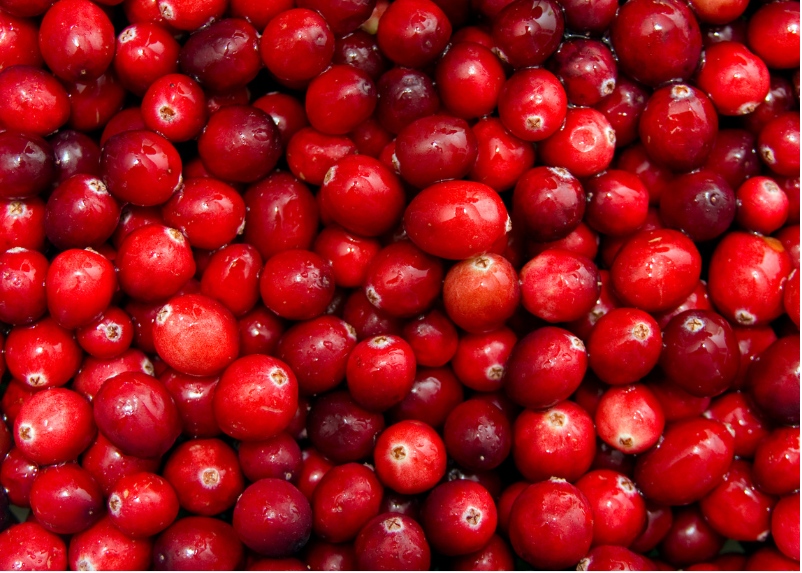
Nutritional Profile of Cranberries
Let’s talk about what makes these little red berries such nutritional superstars! Each cup of fresh cranberries is packed with an impressive array of nutrients while only containing about 50 calories. You’re getting a serious vitamin C boost – about 24% of your daily needs in just one serving! But that’s not all. These berries are loaded with vitamin E, vitamin K1, and manganese, plus they’re an excellent source of fiber, containing about 4.6 grams per cup. What really makes cranberries special, though, is their unique antioxidant profile. They contain powerful compounds called proanthocyanidins (PACs) and flavonoids that you won’t find in many other fruits. It’s like having a tiny antioxidant bomb in your diet!
Top Health Benefits of Cranberries
Heart Health
- A 2019 study in the Journal of Nutrition found that drinking low-calorie cranberry juice daily for 8 weeks significantly reduced several risk factors for cardiovascular disease
- Research from the University of Wisconsin showed that cranberry consumption increases HDL (good) cholesterol while lowering LDL (bad) cholesterol
- The high potassium content helps regulate blood pressure – one cup provides about 85mg of potassium
UTI Prevention
- A landmark 2016 meta-analysis in the Journal of Nutrition found that cranberry consumption reduced UTI incidence by 33% in susceptible populations
- The unique A-type proanthocyanidins (PACs) prevent E. coli bacteria from adhering to urinary tract walls
- Studies suggest consuming 36mg of PACs daily (about 8 ounces of pure cranberry juice) for optimal protection
Dental Health
- Research published in the Journal of Dental Research demonstrates that cranberry PACs inhibit the formation of harmful biofilms on teeth
- Studies from the University of Rochester showed cranberry compounds prevent acid production by cavity-causing bacteria
- Regular consumption may reduce plaque formation and gingivitis
Cancer-Fighting Properties
- A 2020 review in Antioxidants journal highlighted cranberries’ potential in fighting various cancers through multiple mechanisms
- Laboratory studies show cranberry extracts can trigger cell death in certain cancer cells
- The high antioxidant content helps protect cells from DNA damage that can lead to cancer development
Anti-Inflammatory Effects
- Research in Food & Function journal found that cranberry polyphenols reduce inflammatory markers in the body
- Studies show reduced inflammation in blood vessels after regular cranberry consumption
- Beneficial for conditions like rheumatoid arthritis and inflammatory bowel disease
Brain Health
- Recent studies in the Journal of Neuroscience suggest cranberry flavonoids may improve memory and cognitive function
- Regular consumption may help protect against age-related cognitive decline
- Antioxidants in cranberries help reduce oxidative stress in brain tissue
Digestive Health
- A 2022 study in Gut Microbes showed cranberries promote beneficial gut bacteria growth
- The proanthocyanidins help prevent H. pylori bacterial infections in the stomach
- High fiber content (4.6g per cup) supports regular digestion and gut health
Immune System Support
- Research in Nutrients journal demonstrates cranberries enhance immune cell function
- High vitamin C content (24% DV per cup) supports overall immune system health
- Antioxidant compounds help fight oxidative stress throughout the body
Skin Health
- Studies in the Journal of Nutrition found cranberry antioxidants may protect skin from UV damage
- Anti-inflammatory properties help reduce acne and skin inflammation
- Vitamin C content supports collagen production for healthy skin
Blood Sugar Control
- Recent research in the Journal of Diabetes Research suggests cranberries may help improve insulin sensitivity
- The high fiber content helps slow sugar absorption
- Studies show potential benefits for type 2 diabetes management
Important Note: While these benefits are supported by research, it’s worth noting that many studies use concentrated forms of cranberries or extracts. To get maximum benefits from whole cranberries:
- Choose fresh or frozen when possible
- Look for unsweetened juice varieties
- Be mindful of added sugars in dried cranberries
- Consider timing of consumption (especially for UTI prevention)
- Consult healthcare providers about potential interactions with medications, particularly blood thinners
How to Incorporate Cranberries Into Your Diet
You don’t need to wait for Thanksgiving to enjoy these tart little powerhouses! Let me share some creative and tasty ways to make cranberries part of your everyday meals. I’ve been experimenting with cranberries for years, and trust me – they’re way more versatile than you might think!
Breakfast Boost
- Blend fresh or frozen cranberries into your morning smoothie – try combining them with banana and orange for a perfect sweet-tart balance
- Sprinkle dried cranberries over oatmeal or yogurt parfaits
- Add them to your favorite pancake or waffle batter
- Mix into homemade granola for an antioxidant boost
Smart Snacking
- Create a trail mix with dried cranberries, dark chocolate chips, and nuts
- Make cranberry-infused water by adding fresh berries to your water bottle
- Blend them into energy balls with dates and nuts
- Try them in homemade fruit leather for a natural sweet treat
Main Meals
- Toss fresh cranberries into fall salads with apples and pecans
- Add dried cranberries to quinoa or rice pilaf
- Make a cranberry chutney for grilled chicken or pork
- Blend them into vinaigrettes for a tangy dressing
Quick Recipe Ideas
- 5-Minute Cranberry Salsa:
- Pulse fresh cranberries with jalapeño, cilantro, and lime
- Perfect for tacos or as a party dip!
- Cranberry Overnight Oats:
- Mix oats, almond milk, dried cranberries, and chia seeds
- Top with honey and nuts in the morning
- Antioxidant Power Smoothie:
- Blend frozen cranberries, mixed berries, spinach, and Greek yogurt
- Add a banana for natural sweetness
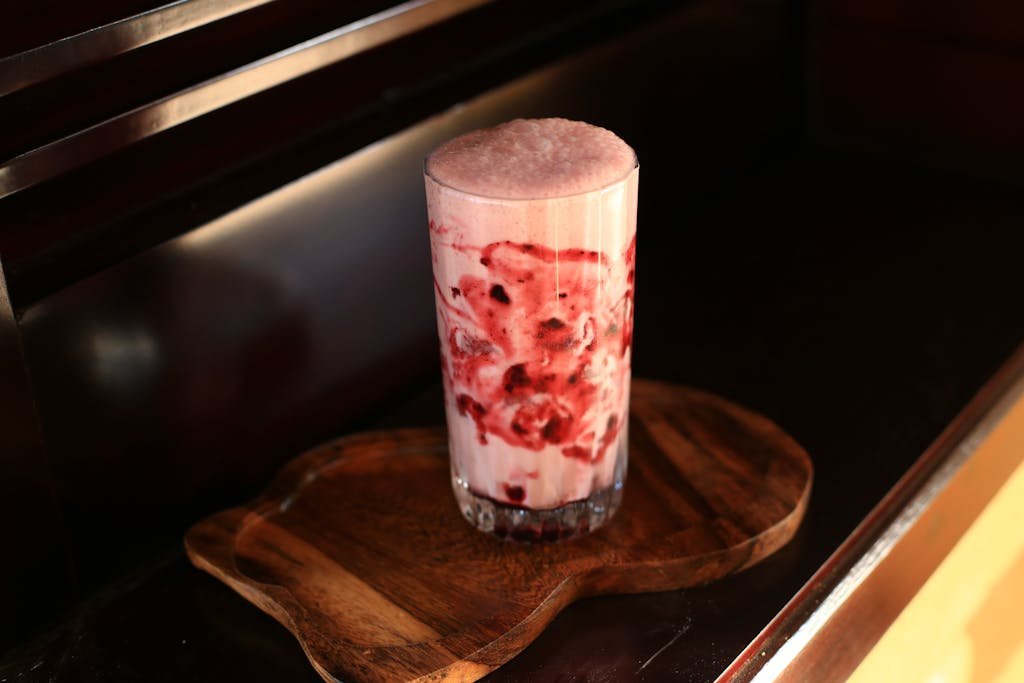
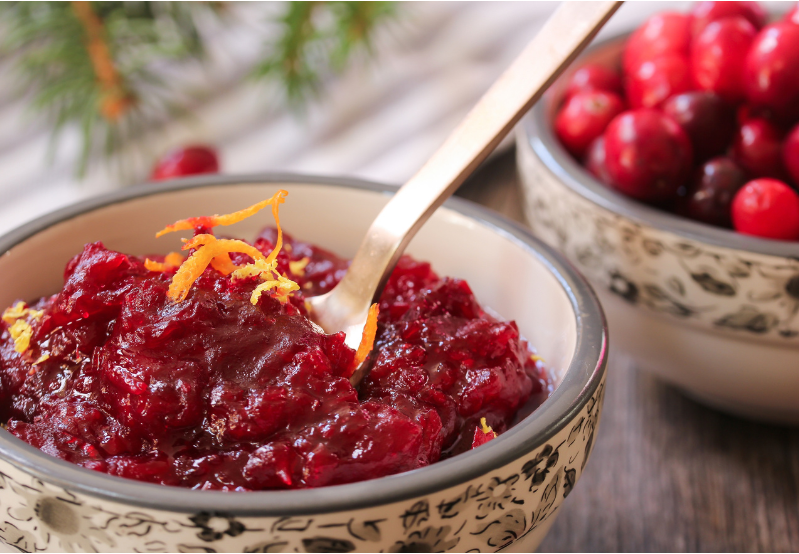

Pro Tips:
- Buy fresh cranberries in season (October-December) and freeze them for year-round use
- When using fresh cranberries in recipes, give them a quick pulse in the food processor for better distribution
- Balance their tartness with natural sweeteners like honey or maple syrup
- Keep dried cranberries in an airtight container to maintain freshness
Remember, while dried cranberries are convenient, they often contain added sugars. Look for naturally sweetened versions or use fresh/frozen when possible for maximum health benefits!
Dried Cranberries vs. Fresh Cranberries vs. Cranberry Juice
.Let’s break down the cranberry trio! Each form of cranberries has its own unique benefits and trade-offs. Fresh cranberries are the nutritional champions, packing the biggest antioxidant punch with the lowest sugar content – but let’s be honest, they’re pretty tart to eat on their own! When you switch to dried cranberries, you’re getting a more convenient snack, but here’s the catch: most dried varieties add quite a bit of sugar to balance out that tartness. In fact, a 1/4 cup serving of dried cranberries typically contains about 29g of sugar! As for cranberry juice, it’s the most popular form but can be a bit tricky. Pure, unsweetened cranberry juice is incredibly tart (and pretty hard to find), while cranberry juice cocktail often contains added sugars and only about 25-30% actual cranberry juice. But don’t worry – I’ve got some smart tips for getting the most out of each type!
Side Effects and Considerations
Okay, let’s talk about the “too much of a good thing” scenario! While cranberries are generally super safe, there are a few things you should keep in mind. First up, if you’re taking blood-thinning medications like warfarin, you’ll want to chat with your doctor about cranberry consumption – they can interact with these medications. Then there’s the kidney stone connection. Cranberries contain compounds called oxalates, which can contribute to kidney stone formation in susceptible people. Studies suggest moderate consumption is fine for most folks, but if you have a history of kidney stones, you might want to limit your intake.
Here are some other considerations to keep in mind:
Supplements: Follow package directions and consult healthcare provider
Sugar Content Watch-Out:
Dried cranberries: 29g sugar per 1/4 cup
Cranberry juice cocktail: 28g sugar per cup
Fresh cranberries: Less than 4g natural sugar per cup
Digestive Considerations:
Some people might experience mild stomach upset when consuming too many fresh cranberries
The high fiber content can cause bloating if you’re not used to it
Start with small amounts and gradually increase to avoid digestive issues
Safe Consumption Guidelines:
Fresh/frozen: 1-2 cups per day is generally safe
Dried: Stick to a 1/4 cup serving
Juice: 8-16 oz of pure juice daily (less for juice cocktail)
Seasonal Considerations and Storage
Peak Season Magic
The best time to experience cranberries in their full glory is during the fall harvest season, from October through December. During these months, the berries reach their peak ripeness, offering optimal flavor and nutritional benefits. This is also when you’ll find the freshest berries at the most reasonable prices.
Preservation and Storage
Proper storage is key to enjoying cranberries year-round. Fresh cranberries can last 3-4 weeks when refrigerated in their original packaging or a sealed plastic bag. For longer storage, freezing is an excellent option – frozen cranberries maintain their quality for up to a year. When frozen properly, they retain most of their nutritional benefits and can be used directly in cooking without thawing.
Tips from the Experts
Selecting the Best Berries
When choosing fresh cranberries, look for firm, bright red berries that bounce when dropped – a technique actually used by farmers to test berry quality! Avoid berries that are soft, discolored, or wrinkled. The bounce test is more than just farm folklore; it’s a reliable indicator of a cranberry’s freshness and internal structure.
Maximizing Shelf Life
To extend the life of your cranberries, wait to wash them until just before use. Store them in a breathable bag in the crisper drawer of your refrigerator. If freezing, spread them on a baking sheet first to prevent clumping, then transfer to freezer bags once frozen solid. This method ensures you can easily portion out what you need when cooking.
Conclusion:
Cranberries are more than just a holiday staple; they’re a year-round superfood that offers numerous health benefits. From protecting your urinary tract to boosting your immune system, this tiny fruit has a lot to offer. By incorporating cranberries into your meals, you can add a burst of flavor and a wealth of nutrients to your diet. So why not give cranberries a starring role in your kitchen? Your body will thank you!
Resource Recommendations:
Books:
- “The Cranberry Book: Tales, Recipes, and History from a New England Wetland” by Sally K. Fairfax
- “Healing Foods: Prevent and Treat Common Illnesses with Fruits, Vegetables, Herbs, and More” by DK Publishing
- “Superfood Kitchen: Cooking with Nature’s Most Amazing Foods” by Julie Morris
YouTube Channels:
- Nutrition Facts with Dr. Greger – Great scientific deep-dives into cranberry research
- Pick Up Limes – Excellent cranberry recipe tutorials
- America’s Test Kitchen – Professional tips for cooking with cranberries
Blogs and Websites:
- www.cranberryinstitute.org – Latest research and nutrition information
- www.oceanspray.com/Heritage – History and farming practices
- www.wellnessmama.com – Natural health benefits and recipes
- www.foodrenegade.com – Traditional preparations and health benefits


